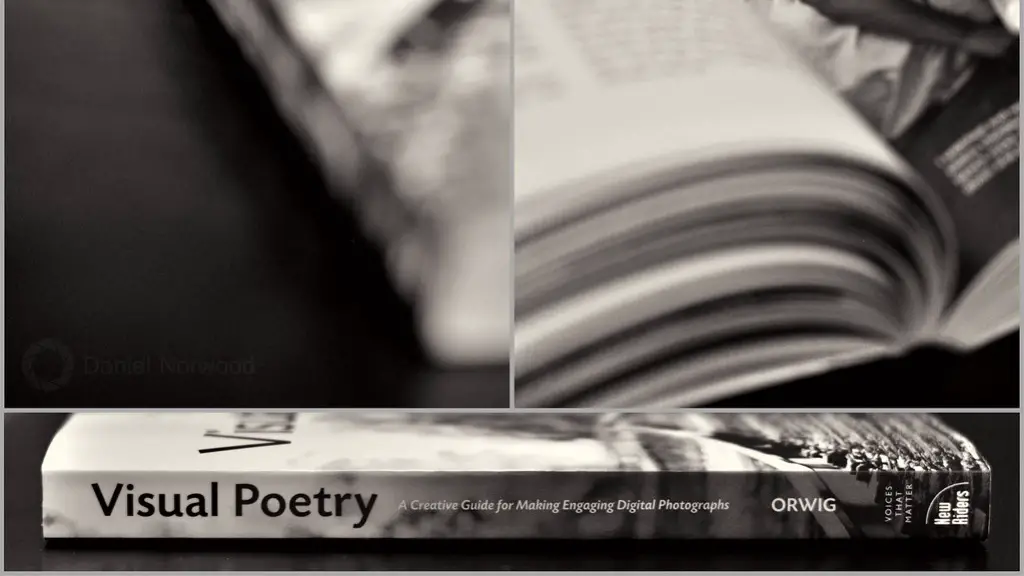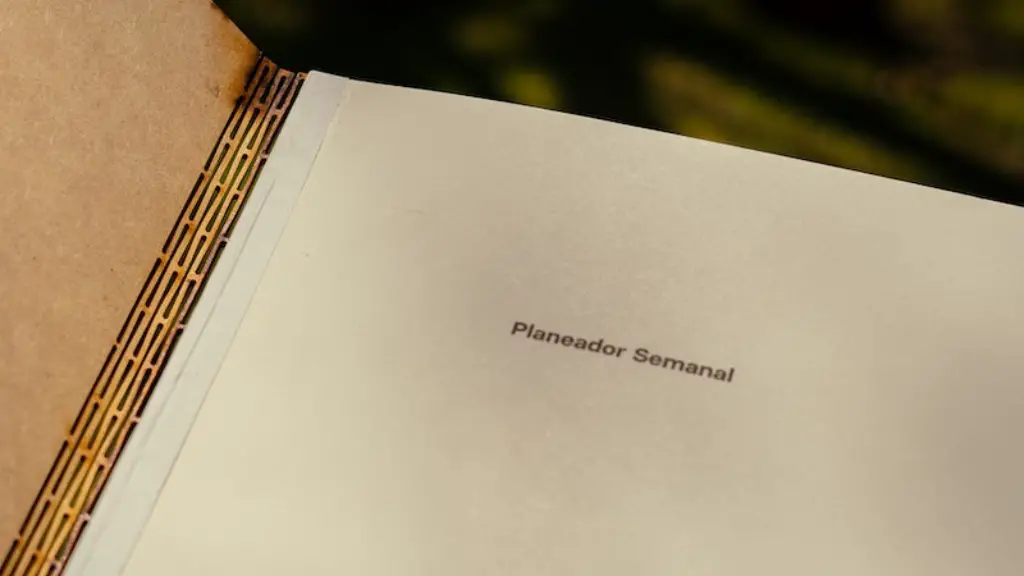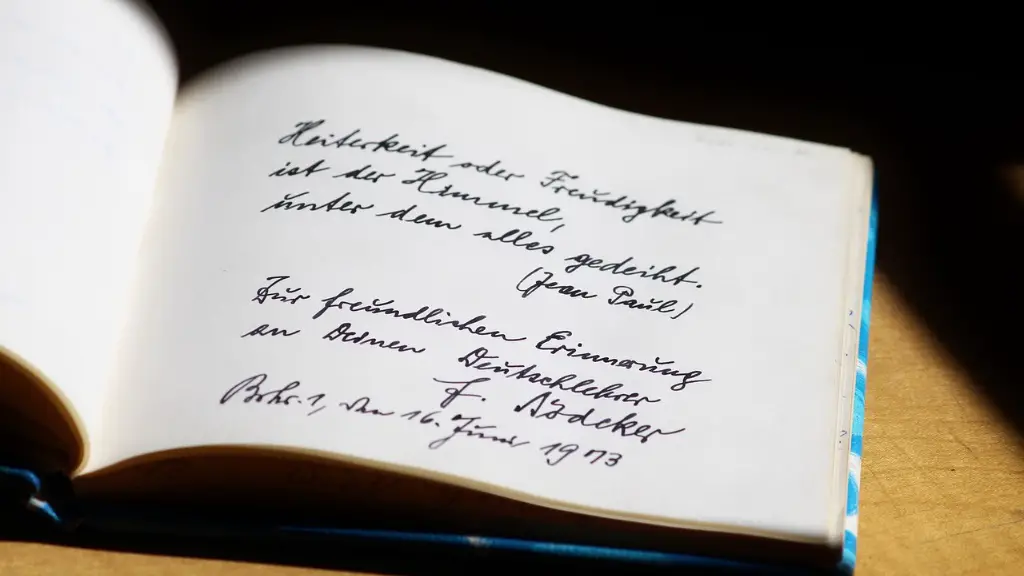What is Iambic Meter in Poetry?
Iambic meter is the rhythmic construction of a line of poetry through various alternating units of stressed and unstressed syllables. This type of meter was a highly-regarded form of composition for many of the major poets in both the western and eastern worlds throughout history. For example, Shakespeare used the form of iambic pentameter in many of his plays such as “Romeo and Juliet” and “Hamlet.”
The term “iambic meter” derives from the term “iamb,” which is a type of metrical foot comprised of two syllables – a short syllable followed by a long syllable. It is the most common type of verse in the English language, but it can also be used in other languages too. Iambic meter is often used to create a steady, rolling rhythm that complements the emotional content of the poem.
Components of Iambic Meter in Poetry
The components of iambic meter in poetry are quite simple; it consists of a series of two-syllable verse segments, or feet, called iambs. Each foot consists of a short, unstressed syllable followed by a long, stressed syllable. In the English language, each line of the poem is typically ten syllables long and alternates the stressed and unstressed syllables. This type of meter is referred to as “iambic pentameter.”
Despite its simplicity, utilizing this type of meter can create a poetic line that is powerful and unique. For instance, the poem “To Autumn” by John Keats utilizes a mix of iambic pentameters, iambic tetrameters, and iambic trimeters. In this particular poem, the use of the iambic meter helps to create a smooth and flowing rhythm that draws the reader in and emphasizes the beauty of the imagery throughout the poem.
History of Iambic Meter in Poetry
The history of iambic meter in poetry dates back to Ancient Greece, where it was developed by Greek poets as a way to create rhythm and flow in their poems. This type of meter quickly spread throughout the western world and was commonly used by the eminent poets and playwrights of the English Renaissance such as Geoffrey Chaucer, William Shakespeare, and John Milton.
The usage of iambic meter has since then been adopted by many other writers of modern poetry. From Walt Whitman to Anne Sexton, many of the major poets have used this type of meter in their poetic works. Even recently, contemporary poets have used the iambic meter to create powerful, emotive works of art.
Benefits of Using Iambic Meter in Poetry
Using iambic meter in poetry can have a number of benefits for both the author and the reader. Firstly, it allows the poet to create a consistent and repetitive rhythm that can draw the reader in and provide structure to the poem. Additionally, it helps to give emphasis to certain phrases or words in the poem and draw out the meaning or emotion of the poem.
Furthermore, this type of meter has been used historically to add a sense of drama and theatricality to a poem. For example, in William Shakespeare’s plays, many of the soliloquies that a character delivers have been written in iambic pentameter. This helps to bring the story to life, as the meter helps to convey the emotion and intensity of the scene.
Structuring Poems Using Iambic Meter in Poetry
When it comes to structuring a poem using iambic meter, poets should first of all decide on whether to use iambic pentameter or a shorter verse form such as iambic trimeter or iambic tetrameter. Once they have decided on the length of verse, they can then begin writing the poem with the meter in mind.
When composing a poem in iambic meter, poets should pay special attention to the stress they place on the syllables. As the poem progresses, they should strive to keep the rhythm consistent and even, with an emphasis on the short, unstressed syllables. Additionally, poets can use caesuras (pauses) or enjambment (breaking up lines with no punctuation) to create interesting variations of the iambic rhythm.
Common Uses of Iambic Meter in Poetry
Iambic meter is a very popular form of poetic meter, and for good reason. It is easy to use and understand, and it allows poets to explore different variations of the meter. It can be used to emphasize certain words, phrases or ideas and draw the reader in to the poem. Additionally, its rhythmic structure can create a sense of drama and theatricality that can bring a poem to life.
The most common uses of iambic meter in poetry are in sonnets, ballads, and other lyrical forms. Additionally, it’s often used in longer narrative or epic poems such as Milton’s “Paradise Lost” or Dante’s “Divine Comedy.” Iambic meter is also prevalent in the works of many playwrights, especially the plays of William Shakespeare.
Analyzing Iambic Meter in Poetry
Analyzing iambic meter in poetry requires a keen ear and an understanding of the structure of the poem. Generally, when analyzing a poem in iambic meter, readers can start by breaking the poem down into its individual syllables and noting whether each syllable is stressed or unstressed. This can help readers to see the pattern of rhythm and flow throughout the poem.
Readers can also look for variations in the rhythm by noting places in the poem where the meter is disrupted. This can help them to identify words or phrases in the poem that the author is trying to emphasize or draw attention to. An understanding of the poem’s meter is key to understanding its meaning and the emotions behind it.
The Use of Iambic Meter in Improvisation
In some cases, poets may also use iambic meter in improvisation. In this technique, the poet is given a starting phrase or prompt, to which they must compose a poem on the spot in iambic meter. This is a challenging task, as it requires the poet to compose sentences in the moment that have the correct meter and rhythm.
However, improvisation using iambic meter can be a great exercise for those wishing to hone their skills as a poet. Not only does it allow for the possibility of inspiration to strike, but it also helps the poet become more familiar with the structure and flow of poetic verse.
The Impact of Iambic Meter on Poetry
Iambic meter has had a significant impact on the development of poetry throughout history. From the works of the early Greek poets to the plays of William Shakespeare, many of the greats have employed this type of meter in their poetic works. Its steady, rhythmic structure has helped to create emotion and emphasis in a poem, while providing the reader with a sense of structure and form.
Today, many poets continue to use the iambic meter in both their traditional and modern forms of poetry. This demonstrates the lasting influence that this form of meter has had on the world of poetry, and its continued relevance in the 21st century.
The Adaptation of Iambic Meter in Other Art Forms
The iambic meter has also been adapted for use in other forms of art, from music to theater. In music, composers may use the pattern of stressed and unstressed syllables to create compelling melodies. In theater, playwrights may use iambic meter in their dialogue to help bring the story to life, as famously done by Shakespeare.
Additionally, the iambic meter is also frequently utilized in spoken word performances. Poets can use it to create an emotionally stirring piece, with the meter providing both rhythm and emphasis to the words they are speaking. The iambic meter has become an integral part of many of these forms of art and expression.
Conclusion
Iambic meter has been a crucial part of poetry throughout the ages, from its origins in Ancient Greece to the works of renowned poets such as Shakespeare and Whitman. Its use of a steady rhythm and consistent pattern of stressed and unstressed syllables can evoke powerful emotions in a poem and add a sense of theatricality to the story.
Through its influence and use in various art forms, iambic meter has become a staple of composition and remains as relevant today as it has in past centuries.


